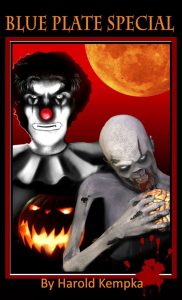 During my NTD edits, I find that about fifty percent of them involve compound words. This doesn’t surprise me because I, too, struggle with the proper spelling of compound and hyphenated words. Sometimes I check Google’s dictionary to get the correct spelling. I got to thinking that other writers might have issues with this, so I decided to take a closer look.
During my NTD edits, I find that about fifty percent of them involve compound words. This doesn’t surprise me because I, too, struggle with the proper spelling of compound and hyphenated words. Sometimes I check Google’s dictionary to get the correct spelling. I got to thinking that other writers might have issues with this, so I decided to take a closer look.
Chicago of Manual Style has rules to guide you, but alas, exceptions, too. It’s the exceptions that cause the most problems with the English language. For example, you should hyphenate adjectival phrases used before a noun. Examples: The distance to the hospital is a six-mile drive. The doctors made last-ditch efforts to save the patient.
But we’ve got an exception: I’ve had a 10 percent increase in balloons. “Percent” should be spelled out and not hyphenated.
Hyphenate compounds using “all” when they follow or precede a noun, says Chicago’s Manual. Example: The balloons that watch over me are all-knowing. But compounds with the word “fold” get spelled as one word, as in: My balloon collection has increased threefold during the last five years.
Exception: If the adjective using “fold” involves a figure, hyphenate. Example: The business realized a 20-fold increase in sales.
Words with “like” can be spelled solid. No exceptions. Examples: He’s got a childlike innocence. The balloons are lifelike figures.
Words beginning with “self” get hyphenated at all times. Example: She’s self-sufficient. He’s a self-serving man.
Proper nouns with “wide” get hyphenated. Other nouns do not. Example: The zombie infection spread Hospital-wide. But: The zombie infection also spread citywide.
“Light-headed” and “lighthearted” will get you every time. The first refers to a physical sensation (dizziness) and the second pertains to an emotion. Most other words involving “light” are open, as in “light pen;” the exceptions are “light-headed” and “light-rail.” When the word “light” is the last element in a compound, it’s spelled solid. Examples: flashlight, candlelight, etc.
Certain compounds can be spelled open or closed depending on the meaning. “Long distance” as a noun makes two words, but as an adjective gets spelled with a hyphen. Example: The balloon soared a long distance during the long-distance flight. “Back up” as a verb is two words, as in: I look carefully before I back up my car. As a noun, it’s one word, as in: I called for backup before I saw my patient.
Other compound words, having been used together for a long time, became spelled as one word, such as bloodstains, windowsill, fireman, postman, droplet, etc. I’m hoping one day that “balloon bed” will become a common enough term to be spelled as one word. Because there are so many exceptions, your best friends when it comes to spelling compound words are the Chicago of Manual Style and the dictionary.
So what compound words give you a challenge? I look forward to hearing your thoughts.










